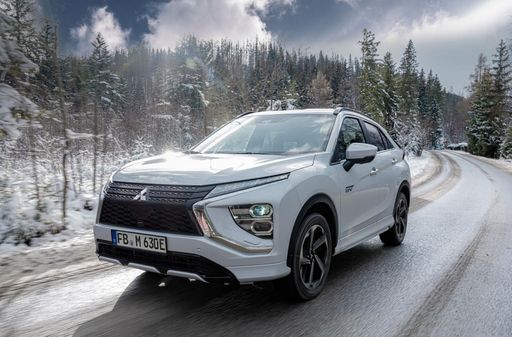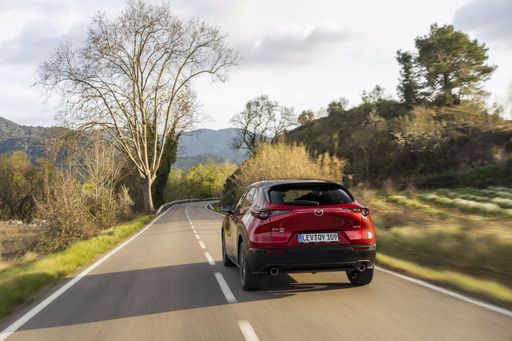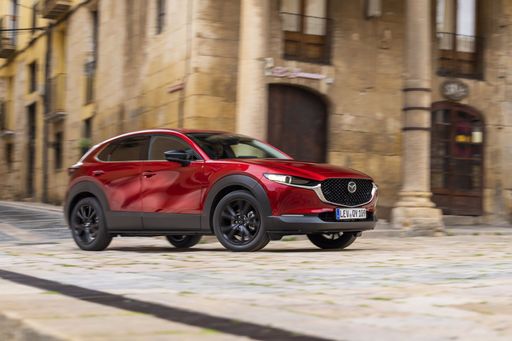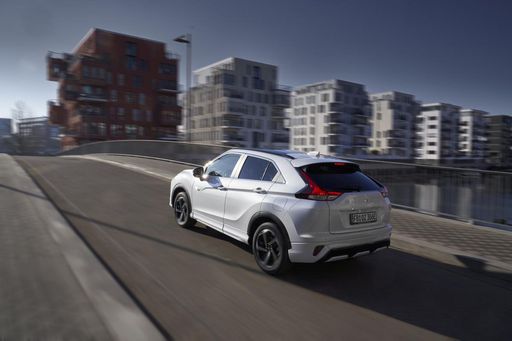Mazda CX-30 vs Mitsubishi Eclipse Cross - Differences and prices compared
Costs and Efficiency:
Price and efficiency are often the first things buyers look at. Here it becomes clear which model has the long-term edge – whether at the pump, the plug, or in purchase price.
Mazda CX-30 has a clearly advantage in terms of price – it starts at 25200 £, while the Mitsubishi Eclipse Cross costs 41100 £. That’s a price difference of around 15900 £.
Engine and Performance:
Power, torque and acceleration are the classic benchmarks for car enthusiasts – and here, some clear differences start to show.
When it comes to engine power, the Mitsubishi Eclipse Cross has a a bit edge – offering 218 HP compared to 186 HP. That’s roughly 32 HP more horsepower.
In acceleration from 0 to 100 km/h, the Mitsubishi Eclipse Cross is minimal quicker – completing the sprint in 7.90 s, while the Mazda CX-30 takes 8.30 s. That’s about 0.40 s faster.
In terms of top speed, the Mazda CX-30 performs somewhat better – reaching 204 km/h, while the Mitsubishi Eclipse Cross tops out at 170 km/h. The difference is around 34 km/h.
There’s also a difference in torque: Mitsubishi Eclipse Cross pulls to a small extent stronger with 300 Nm compared to 240 Nm. That’s about 60 Nm difference.
Space and Everyday Use:
Beyond pure performance, interior space and usability matter most in daily life. This is where you see which car is more practical and versatile.
Seats: offers more seating capacity – vs .
In terms of boot space, the Mitsubishi Eclipse Cross offers somewhat more room – 487 L compared to 430 L. That’s a difference of about 57 L.
In maximum load capacity, the Mitsubishi Eclipse Cross performs somewhat better – up to 1670 L, which is about 264 L more than the Mazda CX-30.
Who comes out on top?
Overall, the Mitsubishi Eclipse Cross shows itself to be wins the duel decisively and secures the title of DriveDuel Champion.
It convinces with the more balanced overall package and proves to be the more versatile choice for everyday use.
 @ Mitsubishi Motors Corporation
@ Mitsubishi Motors Corporation
Mitsubishi Eclipse Cross
Costs and Consumption
View detailed analysis
Engine and Performance
View detailed analysis
Dimensions and Body
View detailed analysis
Mazda CX-30
The Mazda CX-30 blends sleek coupe-like lines with the practicality of a compact crossover, feeling more premium than its price tag suggests. It’s a joy to drive for anyone who likes a taut chassis and an interior that treats daily commutes like a small luxury escape.
details @ Mazda Motor Corporation
@ Mazda Motor Corporation
 @ Mazda Motor Corporation
@ Mazda Motor Corporation
 @ Mazda Motor Corporation
@ Mazda Motor Corporation
 @ Mazda Motor Corporation
@ Mazda Motor Corporation
Mitsubishi Eclipse Cross
Mitsubishi Eclipse Cross combines coupe-like looks with crossover practicality, so you get style without the showroom attitude. It’s an affable daily driver that hides a few quirks behind a confident grin, making it an easy pick for buyers who want personality without fuss.
details @ Mitsubishi Motors Corporation
@ Mitsubishi Motors Corporation
 @ Mitsubishi Motors Corporation
@ Mitsubishi Motors Corporation
 @ Mitsubishi Motors Corporation
@ Mitsubishi Motors Corporation
 @ Mazda Motor Corporation
@ Mazda Motor Corporation
|
 @ Mitsubishi Motors Corporation
@ Mitsubishi Motors Corporation
|
|
|
|
Costs and Consumption |
|
|---|---|
|
Price
25200 - 36800 £
|
Price
41100 - 48200 £
|
|
Consumption L/100km
5.7 - 6.6 L
|
Consumption L/100km
-
|
|
Consumption kWh/100km
-
|
Consumption kWh/100km
16.7 - 16.9 kWh
|
|
Electric Range
-
|
Electric Range
635 km
|
|
Battery Capacity
-
|
Battery Capacity
-
|
|
co2
129 - 148 g/km
|
co2
0 g/km
|
|
Fuel tank capacity
48 - 51 L
|
Fuel tank capacity
-
|
Dimensions and Body |
|
|---|---|
|
Body Type
SUV
|
Body Type
SUV
|
|
Seats
5
|
Seats
5
|
|
Doors
5
|
Doors
5
|
|
Curb weight
1455 - 1587 kg
|
Curb weight
-
|
|
Trunk capacity
422 - 430 L
|
Trunk capacity
487 L
|
|
Length
4395 mm
|
Length
4489 mm
|
|
Width
1795 mm
|
Width
1908 mm
|
|
Height
1540 mm
|
Height
1571 mm
|
|
Max trunk capacity
1398 - 1406 L
|
Max trunk capacity
1670 L
|
|
Payload
458 - 496 kg
|
Payload
-
|
Engine and Performance |
|
|---|---|
|
Engine Type
Petrol MHEV
|
Engine Type
Electric
|
|
Transmission
Manuel, Automatic
|
Transmission
Automatic
|
|
Transmission Detail
Manual Gearbox, Automatic Gearbox
|
Transmission Detail
Reduction Gearbox
|
|
Drive Type
Front-Wheel Drive, All-Wheel Drive
|
Drive Type
Front-Wheel Drive
|
|
Power HP
140 - 186 HP
|
Power HP
218 HP
|
|
Acceleration 0-100km/h
8.3 - 10.3 s
|
Acceleration 0-100km/h
7.90 s
|
|
Max Speed
191 - 204 km/h
|
Max Speed
170 km/h
|
|
Torque
238 - 240 Nm
|
Torque
300 Nm
|
|
Number of Cylinders
4
|
Number of Cylinders
-
|
|
Power kW
103 - 137 kW
|
Power kW
160 kW
|
|
Engine capacity
1998 - 2488 cm3
|
Engine capacity
-
|
General |
|
|---|---|
|
Model Year
2025
|
Model Year
2025
|
|
CO2 Efficiency Class
D, E
|
CO2 Efficiency Class
A
|
|
Brand
Mazda
|
Brand
Mitsubishi
|
What drive types are available for the Mazda CX-30?
The Mazda CX-30 is offered with Front-Wheel Drive or All-Wheel Drive.
The prices and data displayed are estimates based on German list prices and may vary by country. This information is not legally binding.
